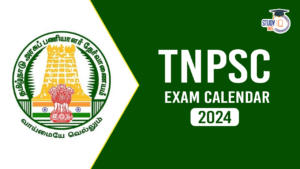Daily Current Affairs for UPSC 2023
Q) Recently seen in news, the ‘International Intellectual Property Index’ is released by which one of the following organizations?
- The United States Chambers of Commerce
- United Nations Conference on Trade and Development
- World Intellectual Property Organization
- World Trade Organization
Daily Current Affairs for UPSC – 27 February 2023
Explanation:
- Option (1) is correct: India ranks 42nd among 55 leading global economies on the International Intellectual Property (IP) Index, released by the United States Chambers of Commerce. Index aims to help nations navigate towards a brighter economic future marked by greater innovation, creativity, and competitiveness. It evaluates the protection of IP rights in 55 of the world’s leading economies, together representing around 90% of global GDP. It covers everything from patent and copyright laws to the ability to monetise IP assets and the ratification of international agreements. India is ripe to become a leader for emerging markets seeking to transform their economy through IP-driven innovation. India has maintained continued strong efforts in copyright piracy through the issuing of “dynamic” injunction orders. India not only has generous R&D and IP-based tax incentives, but also has a strong awareness-raising efforts regarding the negative impact of piracy and counterfeiting. It is a global leader on targeted administrative incentives for the creation and use of IP assets for SMEs. However, index raises serious concerns about rights holders’ ability to enforce their IP rights in India and to resolve IP-related disputes.
Q) Consider the following statements about the ‘Raman Effect’:
- It explains the phenomenon of scattering of a light beam by microscopic particles in a colloid.
- The samples of air and water are analyzed using Raman spectroscopy to determine their chemical composition.
- To analyze medication compositions, Raman spectroscopy is frequently employed in the pharmaceutical sector.
Which of the statements given above are correct?
- 1 and 2 only
- 2 and 3 only
- 1 and 3 only
- 1, 2 and 3
Explanation:
- Statement 1 is incorrect: The Raman Effect was the discovery which won physicist Sir CV Raman his Nobel Prize in 1930. The Raman Effect is a physical phenomenon in which light undergoes a change in wavelength when it interacts with matter. When a beam of light is passed through a sample of matter, some of the light scatters in all directions, and a small fraction of the scattered light undergo a shift in wavelength. This shift is known as the Raman shift. It is caused by the molecular vibrations of the molecules, and it provides information about the vibrational modes of the molecules present in the sample. Raman Effect was a strong evidence to confirm the particle nature of light.
- Statement 2 and 3 are correct: Raman spectroscopy is a powerful analytical tool used in chemistry to determine the molecular structure of compounds. It is also used in biology to study the structure and function of biological molecules, such as proteins, DNA, and RNA. It can be used to analyze cell components, diagnose diseases, and study metabolic processes. Raman spectroscopy is widely used in materials science to study the properties of materials, including polymers, semiconductors, ceramics, and metals. Raman spectroscopy is used in the pharmaceutical industry to analyze drug formulations and to ensure quality control of the final products. Raman spectroscopy can be used to analyze the composition of environmental samples, such as air, water, and soil. It can also be used to monitor pollution and to study the properties of minerals. Raman spectroscopy is used in forensic science to identify and analyze trace evidence, such as fibers, paints, and drugs.
Q) With reference to Compressed Bio Gas (CBG), consider the following statements:
- It is a petroleum by-product that can be utilized as a fuel for transportation.
- The CBG bio-manure can protect plants from the damaging effects of heavy metals.
- Municipal Solid Waste can be used to produce CBG under the ‘SATAT’ scheme.
Which of the statements given above is/are correct?
- 1 only
- 1 and 2 only
- 2 and 3 only
- 1, 2 and 3
Explanation:
- Statement 1 is incorrect: Compressed Bio Gas (CBG) is the mixture of hydrocarbon gases and vapours consisting mainly of Methane in gaseous form, which has been produced by the decomposition of animal and plant waste, purified and compressed for use as an automotive fuel and industrial application. Biogas can be compressed after removal of carbon dioxide and hydrogen sulphide, the same way as natural gas is compressed to CNG, and used to power motor vehicles. Chemically, CBG is the same as CNG-both are compressed methane-and has the same calorific value. The difference between the two is that while CNG is a by-product of petroleum, CBG can be produced from any biomass that makes CBG a commercially viable option as it can be directly used to replace CNG in transportation fuel. Just like CNG, CBG too can be transported through cylinders or pipelines to retail outlets
- Statement 2 is correct: Following the success of ethanol blending, the government is planning to do the same in compressed biogas (CBG). This will be done by offering capital support for biomass aggregation, laying of gas pipelines, and mandating natural gas marketers to blend 5% biogas by 2027. Various by-products of CBG production and their uses are as follows:
- Its solid by-products can be used as bio-manure. It is a rich source of silica that not only aids in the growth and yield of crops but also bestows immunity against many diseases and prevents toxic material uptake by plants such as arsenic, cadmium, lead and other heavy metals.
- The other by-product is CO2. It can be tapped while purifying the biogas and used to produce liquid or solid CO2, which have high demand for food preservation or to be used in fire extinguishers.
- Statement 3 is correct: ‘SATAT’ (Sustainable Alternative towards Affordable Transportation) schemeon Compressed Biogas (CBG) was launched in 2018. Under the SATAT scheme, entrepreneurs shall set up CBG plants, produce & supply CBG to Oil Marketing Companies (OMCs) for sale as automotive & industrial fuels. It aims to produce compressed biogas (CBG) from Waste and Biomass sources like agricultural residue, cattle dung, sugarcane press mud, Municipal Solid Waste (MSW) and sewage treatment plant waste and make CBG available in the market for use as a green fuel. The scheme aims to empower and unleash the rural economy by supporting farmers, increase India’s domestic energy production and self-sufficiency and also reduce the air pollution, and help India lead the world toward a clean energy transition.
Q) Which of the following are the major sources of exposure to Bisphenol A (BPA)?
- Metal food cans
- Eyewear
- Water supply pipes
- Unbreakable windows
Select the correct answer using the code given below:
- 1, 2 and 3 only
- 2 and 4 only
- 1, 3 and 4 only
- 1, 2, 3 and 4
Explanation:
- Option (4) is correct: Several studies have indicated the harmful effects of chemical Bisphenol A, which is widely used to soften plastics, paints and other products. Bisphenol A (BPA) is a chemical produced in large quantities for use primarily in the production of polycarbonate plastics. It is found in various products including shatterproof windows, eyewear, water bottles, and epoxy resins that coat some metal food cans, bottle tops, and water supply pipes. The primary source of exposure to BPA for most people is through the diet, along with exposures from air, dust and water. It disrupts the endocrine system by interfering with the hormones and affects the brain and prostate gland of foetuses, infants and children. It can cause highblood pressure, diabetes and cardiovascular disease in adults. It is found to shorten the breeding time of mosquitoes, thereby aiding in its quick multiplication. Limiting packaged foods that aren’t labeled “BPA-free”, and using other alternatives for plastic could help reduce the indirect impacts of Bisphenol A.
Q) Consider the following statements about Sant Sevalal Maharaj:
- He was an expert in both Naturopathy and Ayurveda.
- He was the religious leader of the Sindhi community.
- He worked for the betterment of the tribal forest dwellers and nomadic tribes.
Which of the statements given above is/are correct?
- 1 and 2 only
- 2 only
- 1 and 3 only
- 2 and 3 only
Explanation:
- Statements 1 and 3 are correct but statement 2 is incorrect: Sant Sevalal Maharaj is the religious leader of the Banjara community. He was born at Surgondankoppa in Karnataka’s Shivamogga district. He is said to have dedicated his life to serving tribal forest dwellers and nomadic tribes. He is said to have mastery in Ayurveda and Naturopathy. He made efforts to dispel and eradicate myths and superstitions prevalent in the tribal communities, including the Banjaras, and brought about reforms in their way of life. Sant Sevalal Maharaj is a revered symbol of every Banjara family. His Samadhi sthal is situated in Washim District of Maharashtra at Pohradevi, also known as Banjara Kashi. The Union government has started the year-long commemoration of the 284th birth anniversary of Sant Sevalal Maharaj. Banjaras were traditionally nomadic communities, who later settled down. They are said to have origins in the Mewar region of Rajasthan. They can be found across parts of Karnataka, Tamil Nadu, Andhra Pradesh, Telangana, Maharashtra and Madhya Pradesh.


 Current Affairs 24th April 2024 for UPSC...
Current Affairs 24th April 2024 for UPSC...
 TNPSC Exam Calendar 2024, Check Exam Dat...
TNPSC Exam Calendar 2024, Check Exam Dat...
 Fundamental Rights of Indian Constitutio...
Fundamental Rights of Indian Constitutio...

















